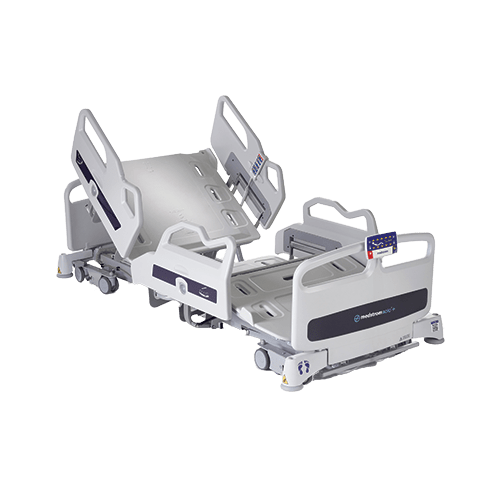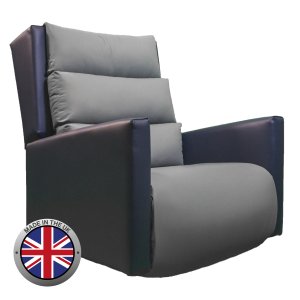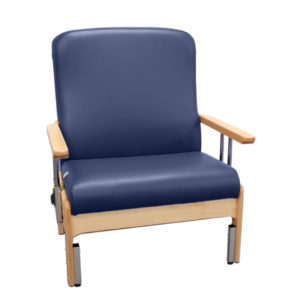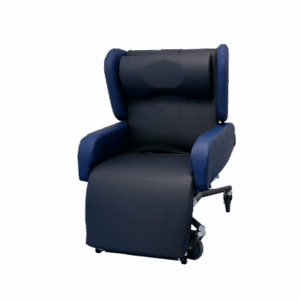
How to Measure Seat Size From a Chair
It’s often easier to measure seat size when a patient is in a chair, rather than sitting up in bed.
If a patient is in a chair that is unsuitable for them, or the wrong size, you may still be able to measure them for a better alternative while they are sitting in that chair. However, this will depend on the extent of the unsuitability. A chair that is too narrow, for example, will not be able to be utilised to obtain accurate measurements.
This post describes how to measure a patient from a sitting position to ensure that the replacement chair is best for their needs.
Measuring for Seat Size from a Sitting Position
The most important three measurements to get, described in more detail in the table below, are:
- Width: The patient’s width at their widest point when sitting upright.
- Depth: The distance between the back of the knee and the rear most point of the patient’s bottom.
- Height: The distance between the back of the heel and the back of the knee.
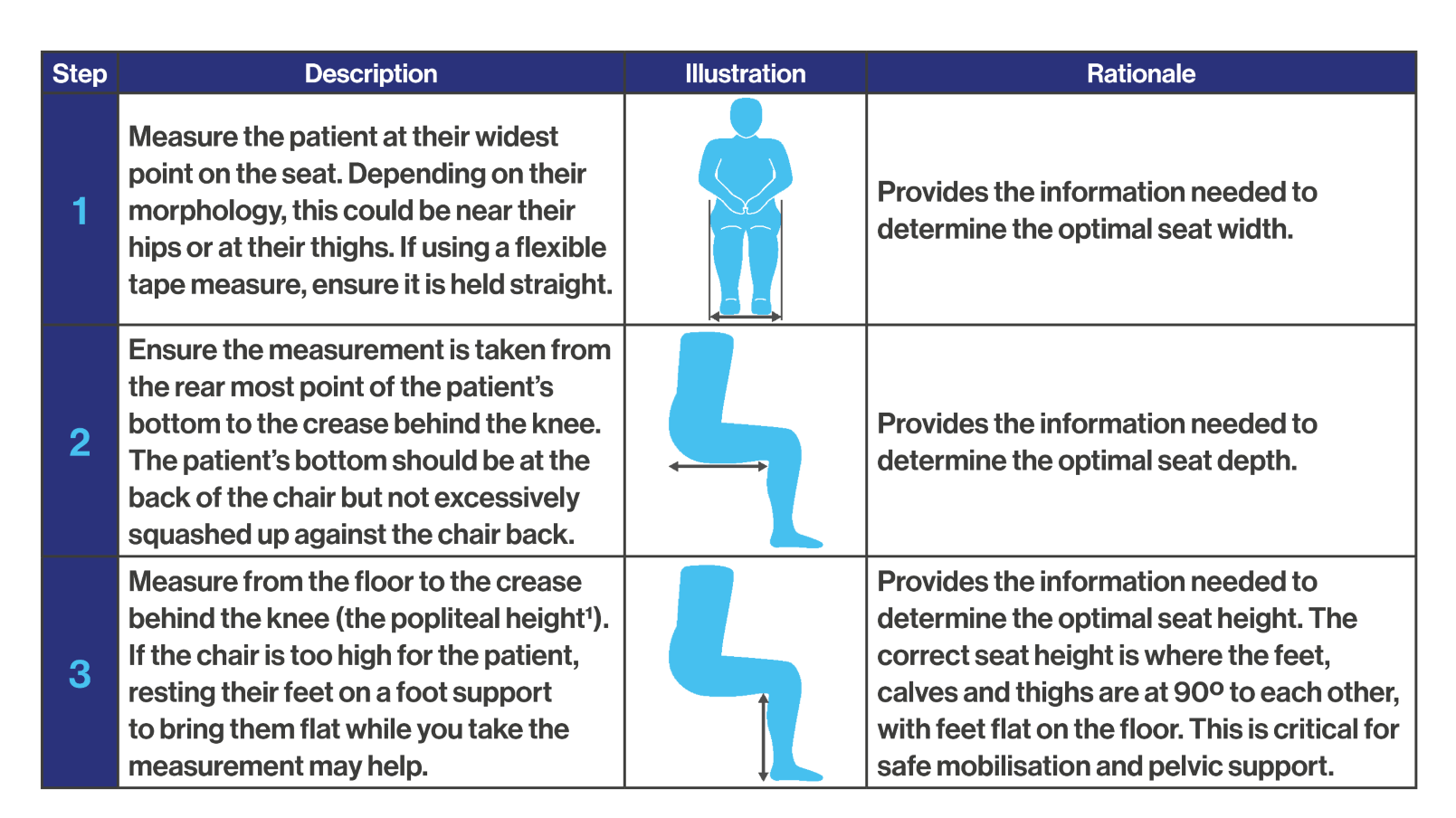
This method describes the minimum requirements for measurements needed. Some patients may need further measurements depending on the complexity of their needs and the type of chair being provided.2
Other Tips to Measure Seat Requirements Accurately
- Ensure that you’re measuring the patient, not the seat they are on.
- If using a flexible tape measure, ensure the measurements are taken in a straight line and not around the patient’s body. Note – this differs from the in-bed measurement method.
- Check that the patient is wearing the footwear that they are/will be using for standing and mobilising.
References
-
Martindale D (2021). Calculating bed height for hospital patients using popliteal measurement. Nursing Times [online]; 117: 10.
-
Waugh K & Crane B (2013). A Clinical Application Guide to Standardized Wheelchair Seating Measures of the Body and Seating Support Surfaces. University of Colorado/Assistive Technology Partners. https://www.besrehab.net/media/335263/150614guidetoseatingmeasuresbpg3b-2-.pdf





